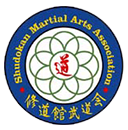Tanren
By Evans, JohnThis article appeared in the "SMAA Journal" Volume 14, Issue 3
in fiery core
to bellows gust and beat of steel
soft binds to hard
Any arduous progressive training may be termed tanren, but tan and ren, the Chinese characters that make up this word, refer originally to the processes involved in forging metal. In the context of learning a physical art, tanren refers not so much to the acquisition of skills as the transformation of structure. Both kanji refer to forging, refining, or tempering of metal thus encompassing every phase of sword making. Despite the obvious differences between metal and human tissue, there are many parallels between the phases of sword making and the stages in the making of a swordsman.
The first stage of preparation of a sword is carried out in a smelter. The rough heating and hammering that is carried out here to purify the base material (tamahagane) is analogous to the hard training of the youthful beginner. Kihon (“basic exercises”)are practiced repeatedly at a high tempo and with copious sweating so that the body is roughly toned, stripped of excess flesh and the organs cleansed of toxins.
The forge master chooses the best material to pass on to the sword maker—not all of the tamahagane will be of sufficient quality to make a blade. In the same way not all who undergo initial training will move on to deeper practices. In part this is up to the teacher, who chooses those he considers ready, but more often it is a case of self-selection. Some will not be able to endure the first phase of training and others will not reach the point at which their mind is sufficiently clarified to value deeper teachings.
After receiving the material from the forge master, the sword maker conducts a ceremony of purification. The selected pieces are then heated, beaten, and repeatedly folded to complete the removal of impurities, homogenize the constituents, and produce the layered crystalline structure that gives the distinctive grain of the blade. Softer metal is then introduced into the center of the rod to give the sword its tensile strength. The harder metal will form the outer layer of the blade and will be further hardened by tempering to produce the cutting edge.
Three Goals of Forging
Purification, homogenization, and integration of soft and hard qualities are also the goals of the forging of the budoka. In the Chinese martial systems this process is called nei gong—inner work or chi gong—energy work (kikou in Japanese). These terms are used to differentiate “internal” training, which focuses on internal energy from “external” practice that focuses primarily on muscular development. In practice the distinction between internal and external is not clear-cut, since all internal transformations are expressed through the physical body.
Inner work usually begins by slowing down and in other ways “loading” the movements of one’s art whilst coordinating them with slow breathing. If the mind is properly attuned and can pick up the appropriate cues from inside, this leads to a conscious engaging of tissues, organs, and systems normally considered outside the control of the mind. This attuning of the mind is the crucial difference between the forging of metal and the forging of the budoka. Even with a sound system and a skilful teacher, everything depends upon the mind of the student. At each stage the mind must participate appropriately for the steps of transformation to be successful. There are no manuals for this process since the internal cues and the sequence of steps will differ according to the unique constitution, physique, and mindset of each student.

